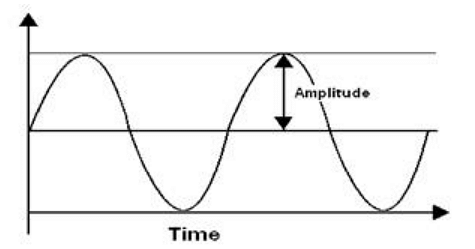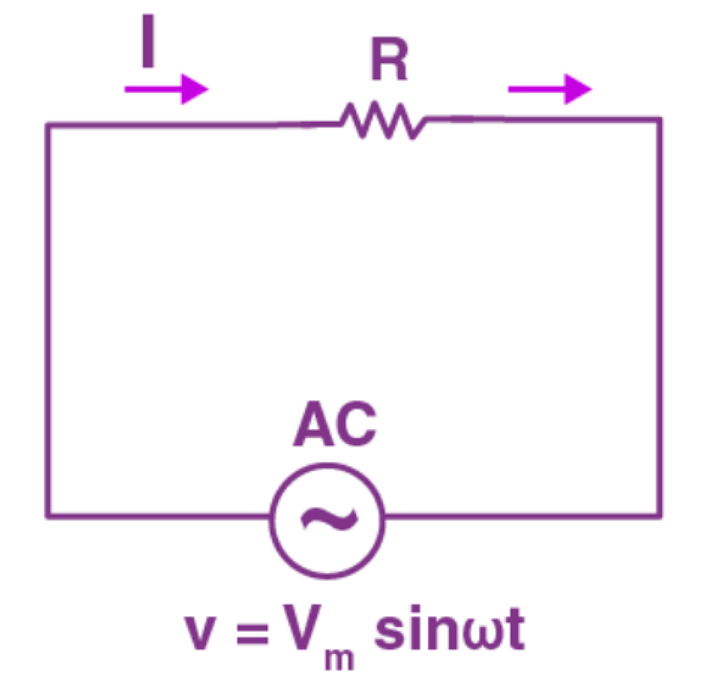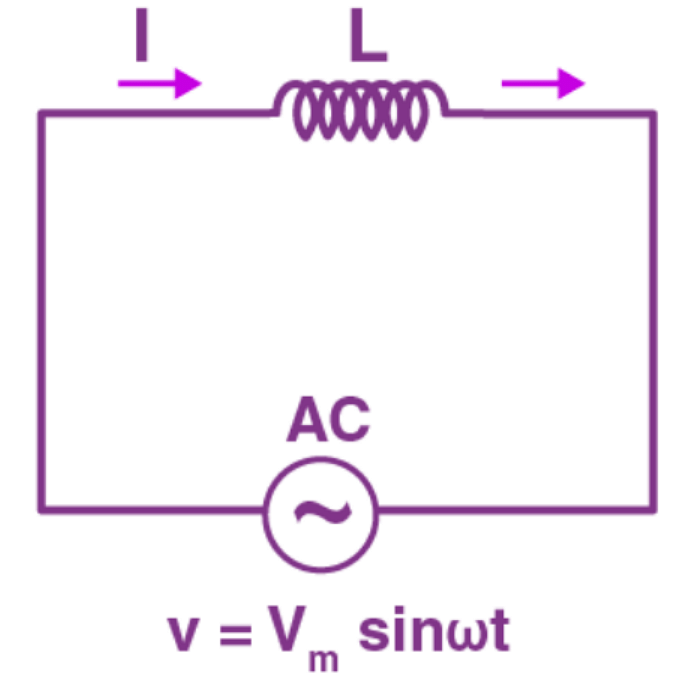Alternating current (AC) is an electric current which periodically reverses direction and changes its magnitude continuously with time. More details about alternating current are covered in this article.
Alternating Current (AC) is a type of electrical current, in which the direction of the flow of electrons switches back and forth at regular intervals or cycles unlike direct current (DC) which flows only in one direction. Some examples of alternating current are the current flowing in power lines and normal household electricity coming from a wall outlet.
What is Alternating Current?
An alternating current (AC) is defined as an electric current that changes its magnitude and polarity at regular time intervals. It is a current that repeatedly changes or reverses its direction opposite to that of a Direct Current (DC) which always flows in a single direction as shown below.

From the above graph, we can observe that the charged particles in AC start moving from zero. It rises to a maximum level and then falls back to zero completing one positive cycle. Then, the AC particles reverse their direction and reach the maximum level in the opposite direction after which it again returns to the original value, thus completing a negative cycle. The same cycle is repeated multiple times. AC are also usually accompanied by alternating voltages. Also, alternating current is also easily transformed from a higher to a lower voltage level.
Alternating Current Production
AC can be generated using devices known as alternators. It can also be produced by various methods using several circuits. One of the most common ways of generating alternating current is through a basic single-coil AC generator which consists of two-pole magnets and a single loop of wire having a rectangular shape.
Here, the AC generator follows Faraday’s principle of electromagnetic induction and converts mechanical energy into electrical energy.
Meanwhile, AC current is supplied to the equipment using 3 wires which are as follows:
- The hot wire transmits power.
- The neutral wire (connected to the earth) provides a return path to the current in the hot wire.
- The third wire (also connected to the earth) is linked to the metallic parts of the equipment with the purpose of eliminating electric shock hazards.
Applications of Alternating Current
Alternating Current (AC) is the form of electric current that is mostly used in different appliances. Some examples of AC include audio signals, radio signals, etc. AC is advantageous over DC due to its ability to transmit power over large distances without a great loss of energy.
AC is used mostly in homes and offices primarily because the generation and transporting of AC current across long distances is a lot easier. AC can also be converted to and from high voltages easily using transformers. It is also capable of providing power to electric motors that further convert electrical energy into mechanical energy. Due to this reason, alternating current is used in many large appliances like refrigerators, dishwashers and many other appliances.
Alternating Current Waveform
The normal AC waveform is sinusoidal in nature in most of the circuits. Meaning, the positive half period matches with the positive direction of the current and vice-versa. A triangular or square wave can also be used to represent the alternating current waveform.

For example, audio amplifiers that deal with analogue voice/music signals produce irregular AC waves. Certain electronic oscillators make square or sawtooth waves.
Average Value of Alternating Current
The average value of AC is calculated using the average of the instantaneous values of alternating current over a complete cycle. The positive half cycle of asymmetrical waves (such as a sinusoidal voltage or current waveform) is equal to the negative half cycle. This means that the average value of AC after the completion of a full cycle is equal to zero.
Since both cycles do certain work, the average value of alternating current is calculated by avoiding the negative signs. Hence, the average value of alternating quantities of sinusoidal waves can be taken into account by considering the positive cycle only.
Also Read:
| Current Electricity | Electric Charges and Fields |
AC Circuit Containing Resistance Only
The purely resistive AC circuit consists of only pure resistance of R ohms. There is no effect of inductance and capacitance on this circuit. The alternate current and voltage move in both backward and forward directions. Thus, both current and voltage follow the shape of a sine.
In a purely resistive AC circuit, electric power is dissipated by the resistors and both the voltage and current phase remain the same which means that the voltage and electric current reach a maximum value at the same time.

Let the supply voltage be
v = Vmsinωt
The instantaneous value of current flowing through the given circuit is given by
i = v / R = Vm / R sinωt
As per the above equation, the value of current is maximum at t = 900, so sin t =1
Then, the instantaneous value of the current will be,
i = Imsinωt
So, it is clear that there is no phase difference between the applied voltage and current flowing through the circuit. Meaning, the phase angle between voltage and current is zero.
Hence, the current is in phase with the voltage in a purely resistive AC circuit.

AC Circuit Containing Inductance Only
This type of AC circuit comprises only inductance and there will not be any effect of resistance and capacitance on this circuit. Here, the electric current will lag behind the voltage by a 90° angle.

The electrical energy is reserved in the magnetic field by the inductor when current flows through it. When this electric current changes, the time-varying magnetic field causes electromotive force (emf) which opposes the current flow. This opposition to the flow of electric current is called inductive reactance.
Let us assume the voltage applied to the circuit is
v = Vmsinωt
The EMF induced in the inductor is
E = -L x di / dt
This induced EMF in the circuit is equal and opposite to the applied voltage.
v = -e
Putting the value of e in the above equation we get,
v = (-L x di / dt)
or
Vmsinωt = L x di / dt
di = Vm / L sinω dt
Integrating both sides, we get,

Inductive reactance is XL = ωL
The value of electric current will be maximum if sin (ωt - π/2) = 1
Therefore
Im = Vm / XL
Substituting the value of Im we get,
i = Im sin (ωt - π / 2)
This implies that the electric current in purely inductive AC circuits lags the voltage by 90°.

If the voltage and current are at the positive peak, the value of power will also be positive. Similarly, if the voltage and current are at a negative peak, then the value of power will also be negative as a result of the phase difference between them.
AC Circuit Containing Capacitor Only
This type of AC circuit includes a pure capacitor only and there will not be any effect of resistance and inductance on this circuit. The capacitor will store electric power in the electric field which is known as capacitance.
When a voltage is applied across the capacitor, an electric field is developed across the plates of the capacitor. Also, there will not be any flow of electric current between them.

As we already know, a capacitor includes two insulating plates that are separated by a dielectric medium. Generally, a capacitor works as a storage device and gets charged if the supply is on and gets discharged if the supply is off.
The voltage applied to the AC circuit is denoted by
v = Vmsinωt
The charge of the capacitor is
q = Cv
So, the electric current flow through the circuit is expressed as
i = dq / dt
Substituting the value of q in the above equation we get,
i = d (Cv) / dt
Now, substituting the value of v in the above equation, we get,

Where XC = 1/C which is capacitive inductance.
The value of current will be maximum if sin(ωt + π/2) = 1
Then, the maximum value of the current,
Im = Vm / XC
Substituting the value of Im we get,
i = Im sin (ωt + π / 2)
This establishes that the electric current flowing through the capacitor leads the voltage by 90°.

Difference Between Alternating Current and Direct Current
Electric current flows either as an alternating current (AC) or direct current (DC). The primary difference between AC and DC is in the direction in which the electrons flow. Tabulated below is the comparison of alternating current vs direct current:
|
Alternating Current (AC) |
Direct Current (DC) |
|
AC is safer to transfer over longer distances and helps in maintaining electric power. |
DC cannot be transferred over very long distances and it has a tendency to lose electric power. |
|
Can change its direction during electric flow. |
Remains constant and does not change its direction during electric flow. |
|
The frequency of alternating current depends from country to country. |
The frequency of the direct current is zero. |
|
AC is generated using an alternator. |
DC is commonly generated by generators, photovoltaic cells and batteries. |
|
Electrons in AC keep changing their directions and can either move backwards or forward. |
Electrons in DC only move in the forward direction. |
|
Load on alternating current can be inductive, capacitive or resistive. |
Load on direct current is always resistive. |
FAQs on Alternating Current
Q1: Define the period of alternating current.
Ans: The period of alternating current is the interval of time between the attainment of a definite value on two successive cycles.
Q2: Define the frequency of the alternating current.
Ans: The frequency of alternating current is the number of cycles or periods it completes in one second.
Q3: Give one method of generating sinusoidal alternating current.
Ans: A sinusoidal alternating current can be generated by rotating a coil in a uniform magnetic field at a constant rate.
Q4: What is the RMS value of an AC?
Ans: The RMS value of an alternating current is the square root of the mean of the squares of the instantaneous values taken over a complete cycle.
Q5: What is the mean value of an AC?
Ans: Mean value of an AC is the mean or average of the instantaneous values of alternating current taken over half a cycle.
Q6: What are the advantages of AC over DC current?
Ans: Some of the advantages of AC over DC are as follows:
- AC can be stepped up or stepped down using a transformer.
- Alternating current can be converted into direct current using electronic supply units.
- AC devices are more durable since their power dissipation is less.
- Transmission of electrical power is more efficient and economical in the form of alternating current.










